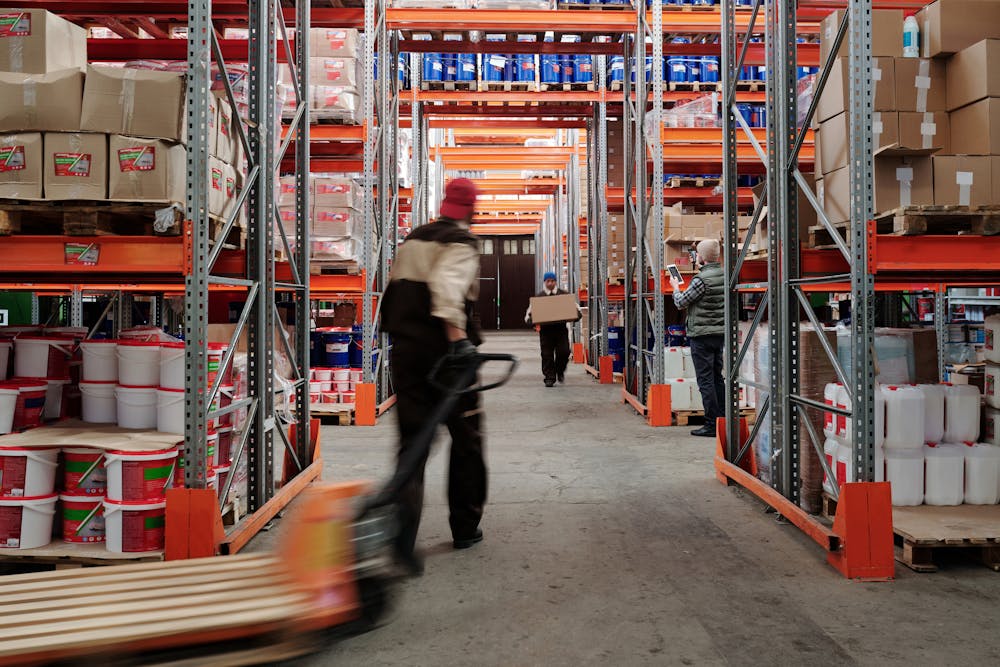Reviews
How Technology Is Shaping Ecommerce Supply Chains in 2025

Supply chains used to be the quiet machinery behind ecommerce success. In 2025, they’ve become the main stage. Driven by AI, automation, and smarter logistics, ecommerce fulfillment is faster, leaner, and more predictive than ever before.
Today’s retailers aren’t just reacting to customer demand; They’re anticipating it, in real time, across borders and platforms.
Let’s take a look at how technology is redefining the ecommerce supply chain, from warehouse to doorstep, and why retailers who ignore these changes do so at their own risk.
Real-Time Visibility Is Now Expected
Lag time has become a liability. In 2025, consumers expect constant updates and retailers require full transparency throughout the supply chain. Real-time visibility tools have moved from luxury to necessity, giving operators instant access to everything from port delays to warehouse inventory levels.
IoT sensors embedded in shipping containers, RFID tags tracking product movement, and cloud-based dashboards tied to predictive analytics are standard issue in modern fulfillment networks. Logistics teams can now detect bottlenecks as they emerge, reroute shipments based on weather or traffic conditions, and update customers before a disruption becomes a complaint.
This visibility improves not only customer satisfaction but also operational agility. Brands with integrated real-time systems are making faster decisions, reducing lost sales from out-of-stock items, and responding instantly to shifts in demand.
AI-Driven Automation Is Redefining Fulfillment
Artificial intelligence is no longer experimental. In today’s supply chains, it’s foundational. AI powers demand forecasting, route optimization, and warehouse robotics, transforming fulfillment from a reactive process to a precision-driven machine.
Forecasting algorithms now pull from multiple data streams to predict what products will be needed, where, and when. In warehouses, vision-equipped robots pick and move items without fatigue or error. Predictive analytics helps shift inventory closer to customers before they even hit checkout.
This automation is especially critical for third-party sellers trying to keep pace with larger competitors. Many are turning to solutions that eliminate the manual overhead entirely. Using dropshipping software for Amazon allows sellers to automate inventory syncing, route orders across multiple suppliers, and track fulfillment progress in real time, all without stocking a single product themselves.
Cross-Border Logistics Are Getting Smarter
Ecommerce is global. Logistics finally caught up. In 2025, shipping across borders no longer means delay and surprise duties. Today’s platforms have built-in systems for:
- Customs pre-clearance
- Automated compliance checks
- Smart routing
- Dynamic tax and tariff calculations
- Real-time package tracking with language localization
That reduces the cost and complexity of international fulfillment.
What’s changed? Cloud-based logistics hubs now sync multiple carriers and last-mile partners for e-commerce operations under one interface. Micro-fulfillment centers are being deployed regionally, so items ship locally instead of from a single, distant warehouse. Real-time APIs coordinate customs documentation and international labeling.
As a result, a seller in Toronto can deliver to a customer in Madrid or São Paulo as efficiently as they can to someone across town. Countries that were once considered too risky or slow are becoming core ecommerce markets thanks to streamlined, tech-backed logistics infrastructure.
Sustainability Is Now a Technology Challenge
Customers want convenience, but not at the planet’s expense. Supply chains are now being measured not just on speed, but on sustainability. And in 2025, the only way to meet those benchmarks is through smarter tech.
Software now calculates carbon emissions at the point of checkout, helping both customers and retailers make greener choices. Route optimization platforms reduce miles driven and fuel used. Demand forecasting slashes overproduction and warehouse waste. Even returns logistics has been retooled with smart scanning and resale recommendations that minimize environmental impact.
Traceability has also gone digital. Blockchain-enabled platforms track where and how products were sourced, offering transparency across every touchpoint of the supply chain.
The Supply Chain Stack Is Being Unified
For too long, ecommerce operators juggled a dozen disconnected platforms: one for inventory, another for shipping, a separate one for customer communication, and yet another for returns. In 2025, that fragmented model is being replaced with fully integrated supply chain ecosystems.
Unified platforms now manage everything from purchase order creation to last-mile delivery. They consolidate data in real time, provide comprehensive dashboards, and offer scenario modeling tools that allow teams to make fast, informed decisions.
For example, if demand spikes in one region due to a trending product, the system can automatically:
- Reallocate stock
- Adjust estimated delivery windows on the site
- Send proactive customer notifications
- Trigger just-in-time restocking from suppliers
- Update marketplace availability to avoid overselling
From Supply Chains to Strategic Engines
What was once a complex, behind-the-scenes operation has become one of the most strategic parts of ecommerce. In 2025, supply chains are intelligent ecosystems built to respond to a constantly shifting landscape.
Tech isn’t just solving logistical problems. It’s transforming the way products move and how customers experience online shopping.

-

 World1 week ago
World1 week agoEthiopian volcano erupts for first time in thousands of years
-

 Health2 days ago
Health2 days ago8 kittens die of H5N1 bird flu in the Netherlands
-

 Legal7 days ago
Legal7 days agoUtah Amber Alert: Jessika Francisco abducted by sex offender in Ogden
-

 US News6 days ago
US News6 days agoExplosion destroys home in Oakland, Maine; at least 1 injured
-

 Health7 days ago
Health7 days agoMexico’s September human bird flu case confirmed as H5N2
-

 Legal3 days ago
Legal3 days ago15 people shot, 4 killed, at birthday party in Stockton, California
-

 World7 days ago
World7 days agoWoman killed, man seriously injured in shark attack on Australia’s NSW coast
-

 Health6 days ago
Health6 days agoMarburg outbreak in Ethiopia rises to 12 cases and 8 deaths




